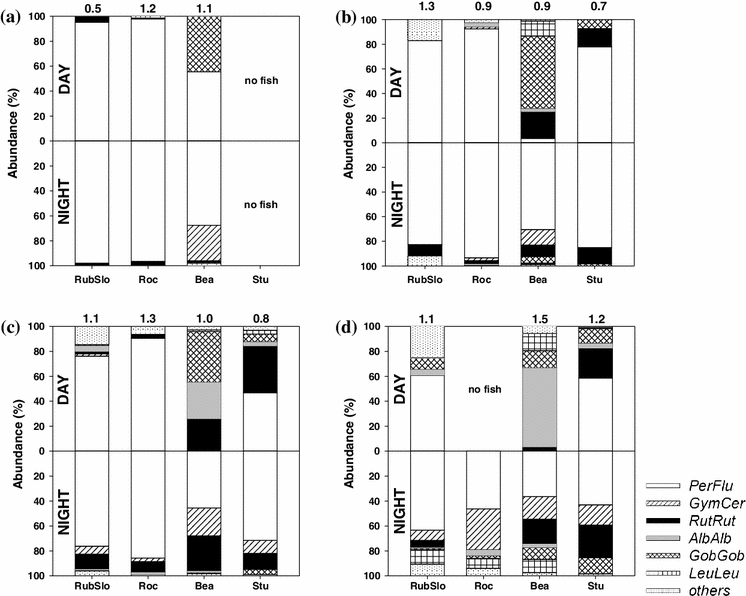 The effect of diel period and littoral habitats on the distribution of age-0 fish was tested in a deep-valley reservoir using boat-modified point abundance sampling by electrofishing (PASE). Day and night samplings unveiled differences in abundance of age-0 fish while recognizing most of the commonly present age-0 fish species in the littoral zone. Night survey provided better information about the abundance of age-0 fish since most species appeared in higher numbers at night. Alternatively, night sampling underestimated bleak (Alburnus alburnus) and gudgeon (Gobio gobio), which were predominantly found in the littoral zone in the daytime. The structure of the age-0 fish assemblage was determined primarily by the characteristics of the littoral habitats, i.e. slope steepness and structure, and three different patterns of habitat use were detected among the fish species. To obtain the most comprehensive assessment of a littoral age-0 fish assemblage and to register all species-specific patterns of habitat use, it is necessary that all littoral habitats in the reservoir are sampled during both day and night periods. The boat-modified PASE could be also used as a standard monitoring tool for routine age-0 fish sampling under difficult conditions of steep-sloped shorelines in large inland waterbodies.
The effect of diel period and littoral habitats on the distribution of age-0 fish was tested in a deep-valley reservoir using boat-modified point abundance sampling by electrofishing (PASE). Day and night samplings unveiled differences in abundance of age-0 fish while recognizing most of the commonly present age-0 fish species in the littoral zone. Night survey provided better information about the abundance of age-0 fish since most species appeared in higher numbers at night. Alternatively, night sampling underestimated bleak (Alburnus alburnus) and gudgeon (Gobio gobio), which were predominantly found in the littoral zone in the daytime. The structure of the age-0 fish assemblage was determined primarily by the characteristics of the littoral habitats, i.e. slope steepness and structure, and three different patterns of habitat use were detected among the fish species. To obtain the most comprehensive assessment of a littoral age-0 fish assemblage and to register all species-specific patterns of habitat use, it is necessary that all littoral habitats in the reservoir are sampled during both day and night periods. The boat-modified PASE could be also used as a standard monitoring tool for routine age-0 fish sampling under difficult conditions of steep-sloped shorelines in large inland waterbodies.
Keywords: Alburnus alburnus; bleak; electrofishing; Gobio gobio; gudgeon; juveniles; night; PASE; slope steepness; structured habitat
